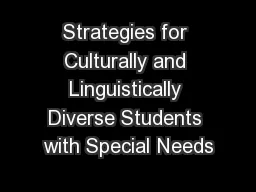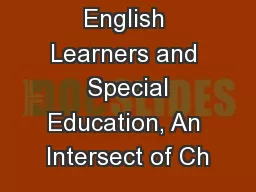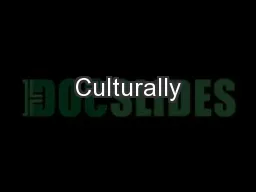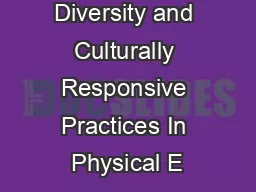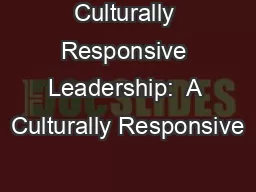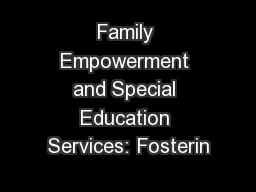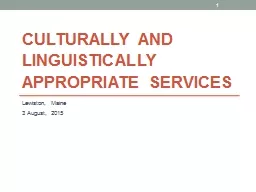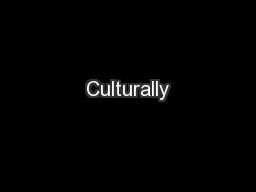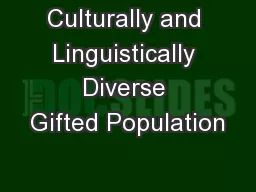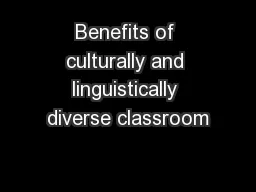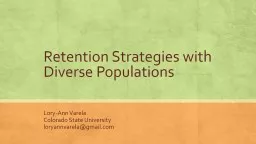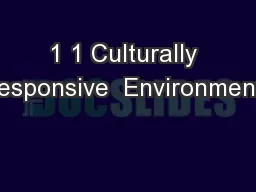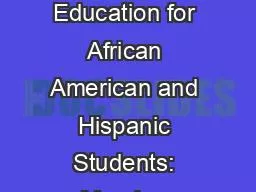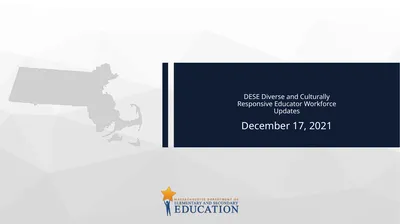PPT-Strategies for Culturally and Linguistically Diverse Students with Special Needs
Author : ellena-manuel | Published Date : 2018-02-14
Juliet E Heart Current trends and prevalence rates Prevailing assessment amp instructional issues General guidelines for the appropriate assessment Researchbased
Presentation Embed Code
Download Presentation
Download Presentation The PPT/PDF document "Strategies for Culturally and Linguistic..." is the property of its rightful owner. Permission is granted to download and print the materials on this website for personal, non-commercial use only, and to display it on your personal computer provided you do not modify the materials and that you retain all copyright notices contained in the materials. By downloading content from our website, you accept the terms of this agreement.
Strategies for Culturally and Linguistically Diverse Students with Special Needs: Transcript
Download Rules Of Document
"Strategies for Culturally and Linguistically Diverse Students with Special Needs"The content belongs to its owner. You may download and print it for personal use, without modification, and keep all copyright notices. By downloading, you agree to these terms.
Related Documents

